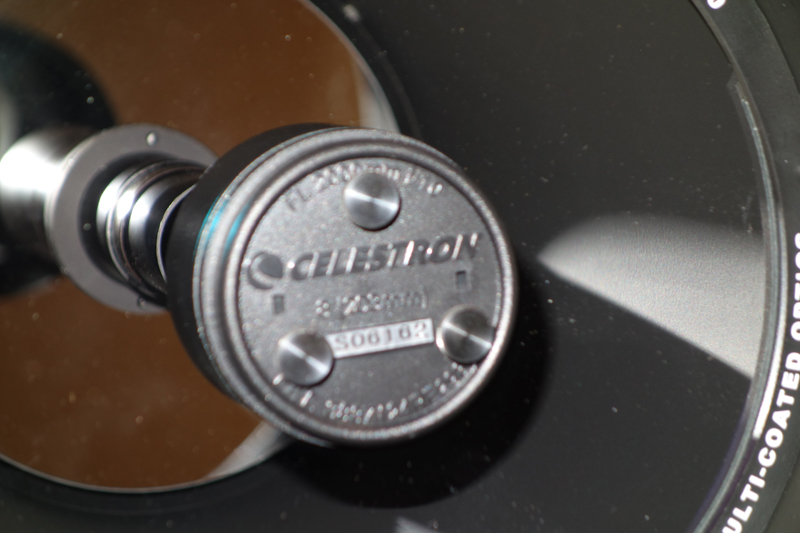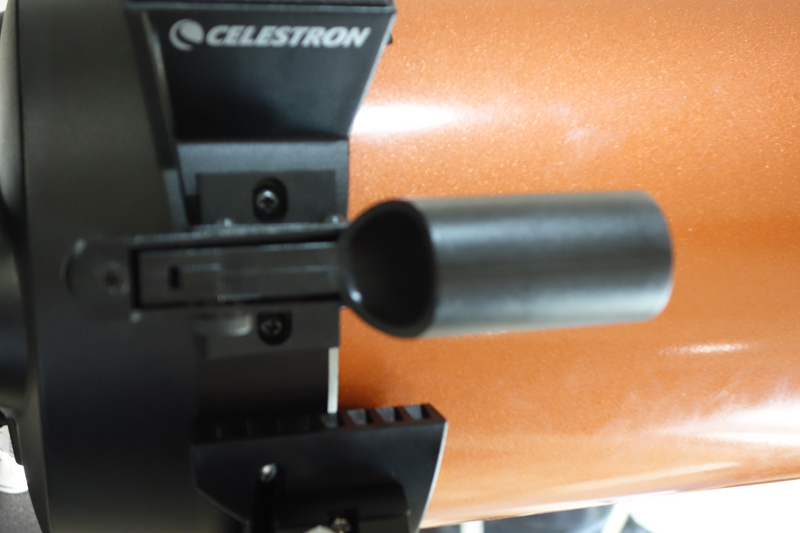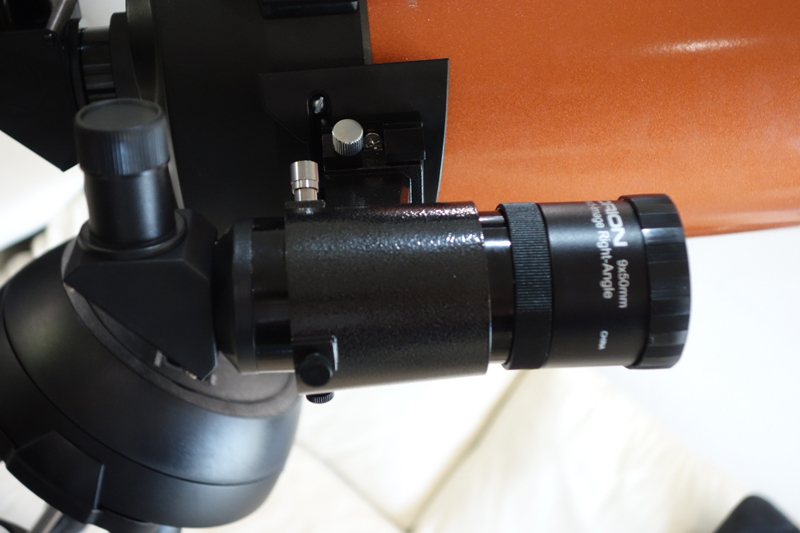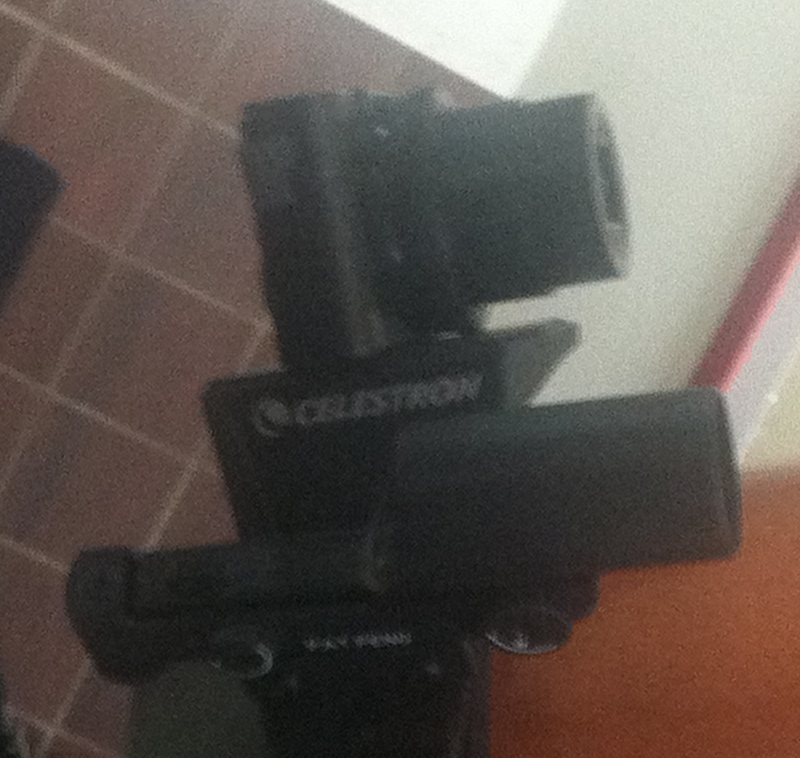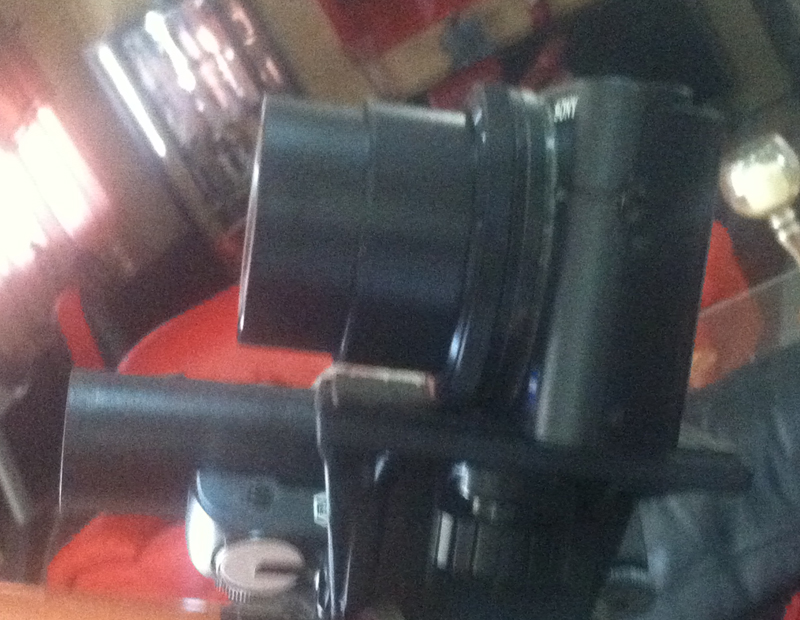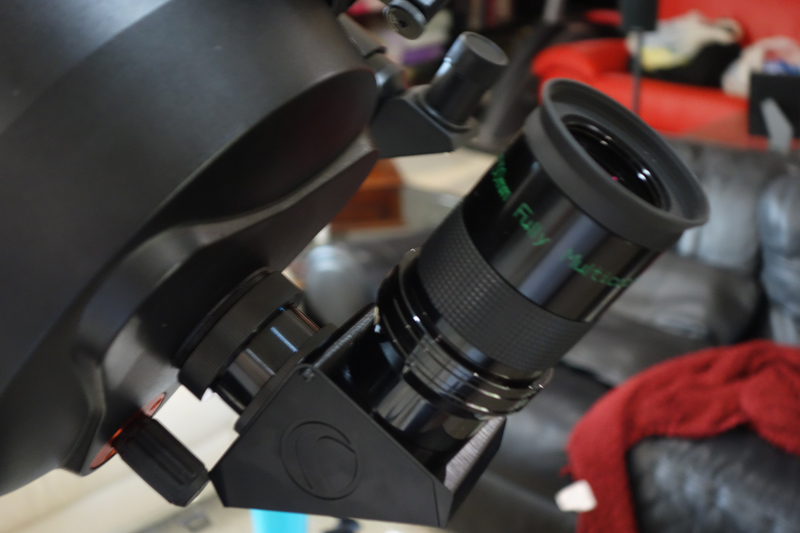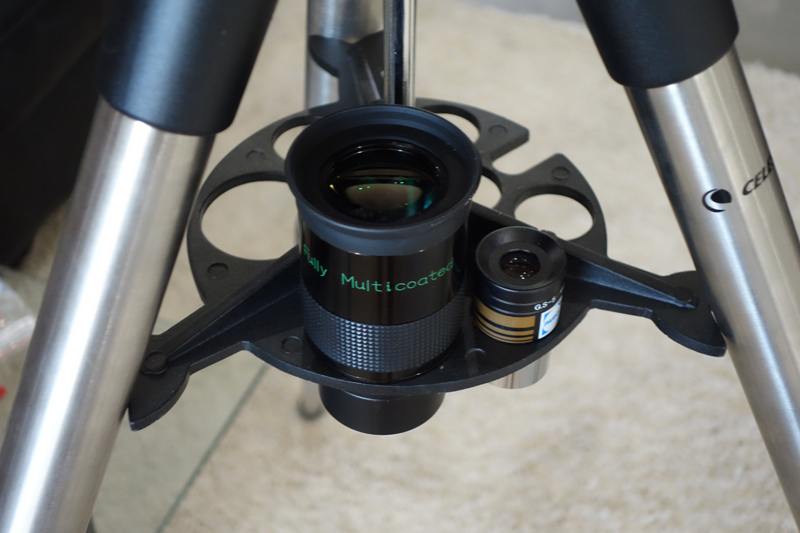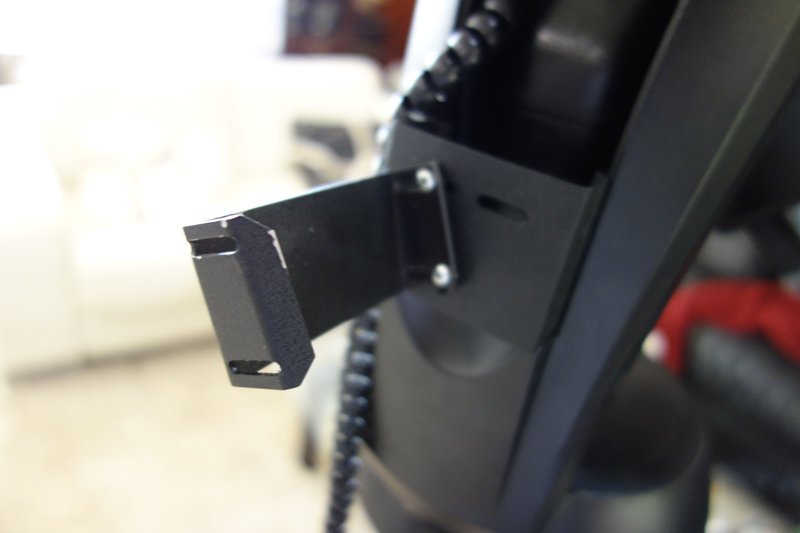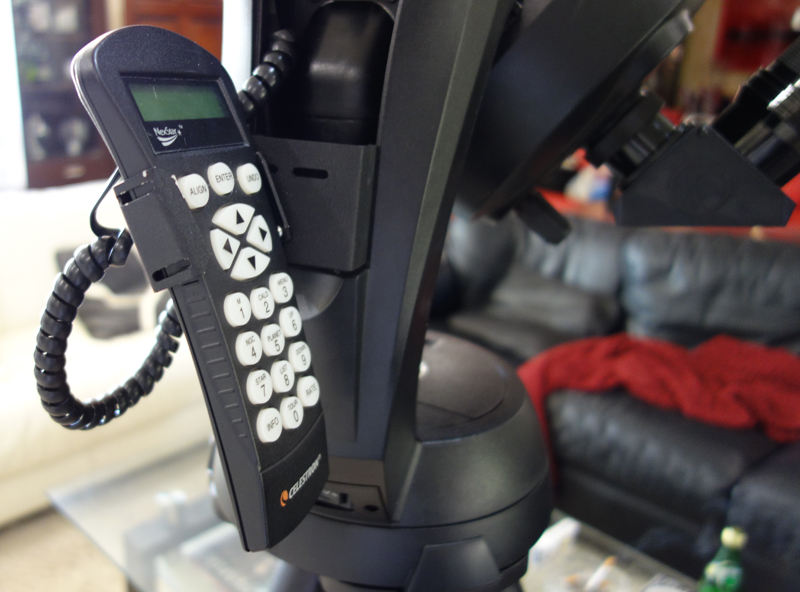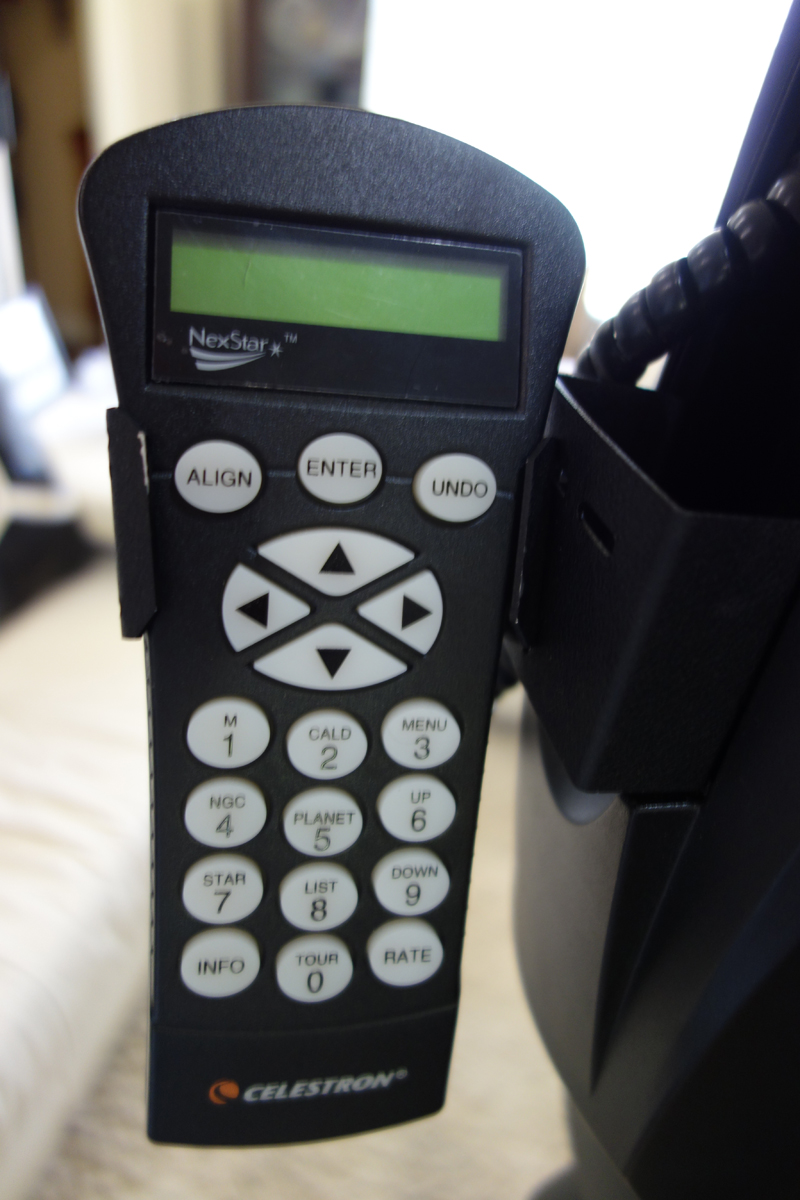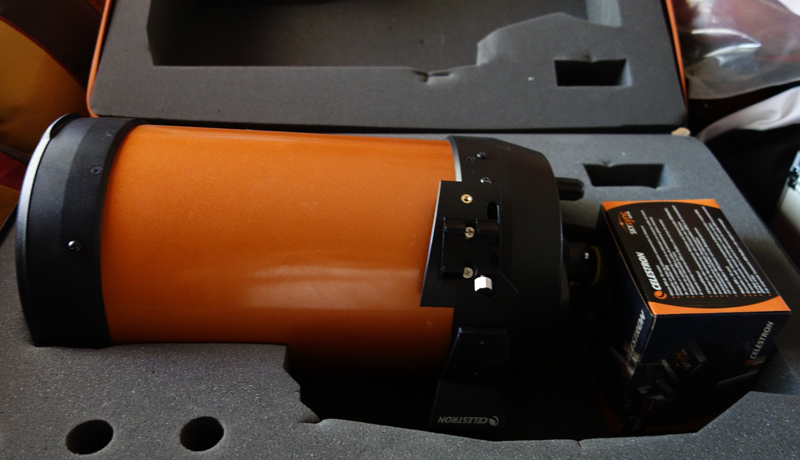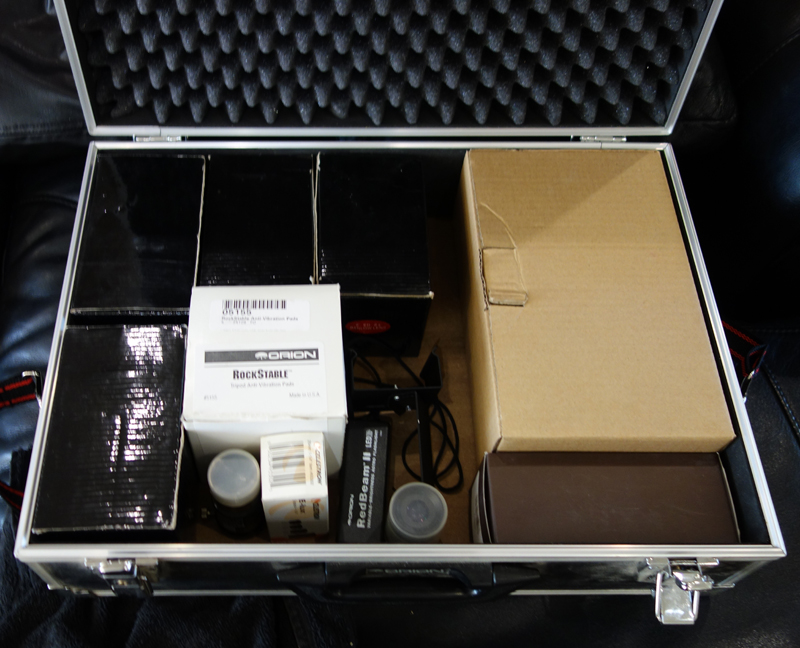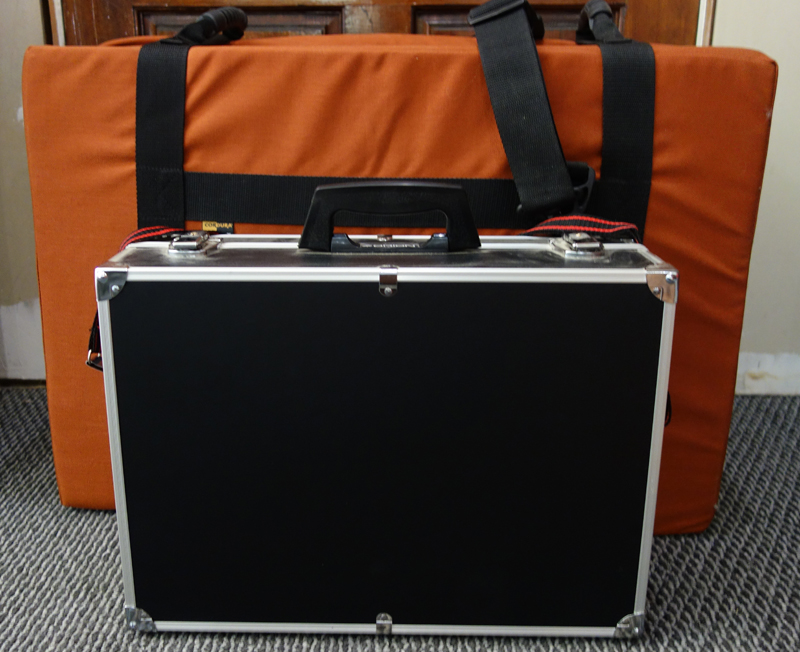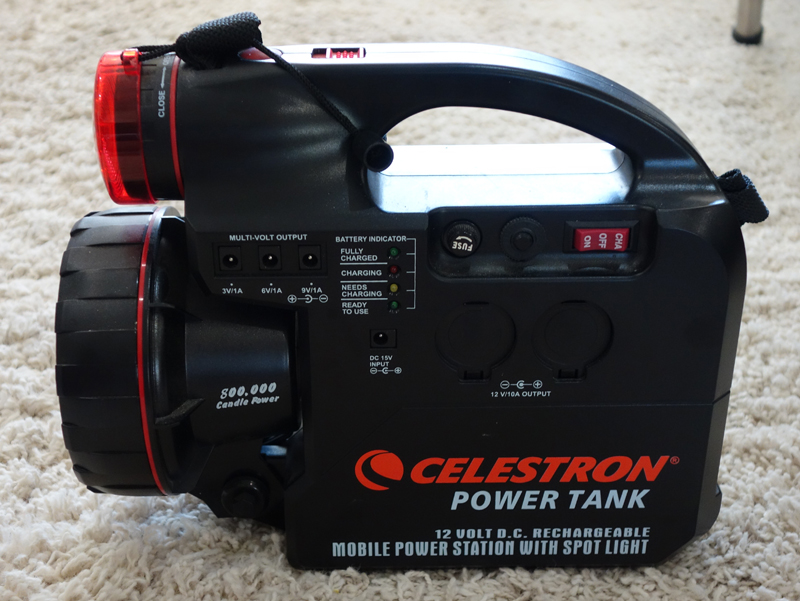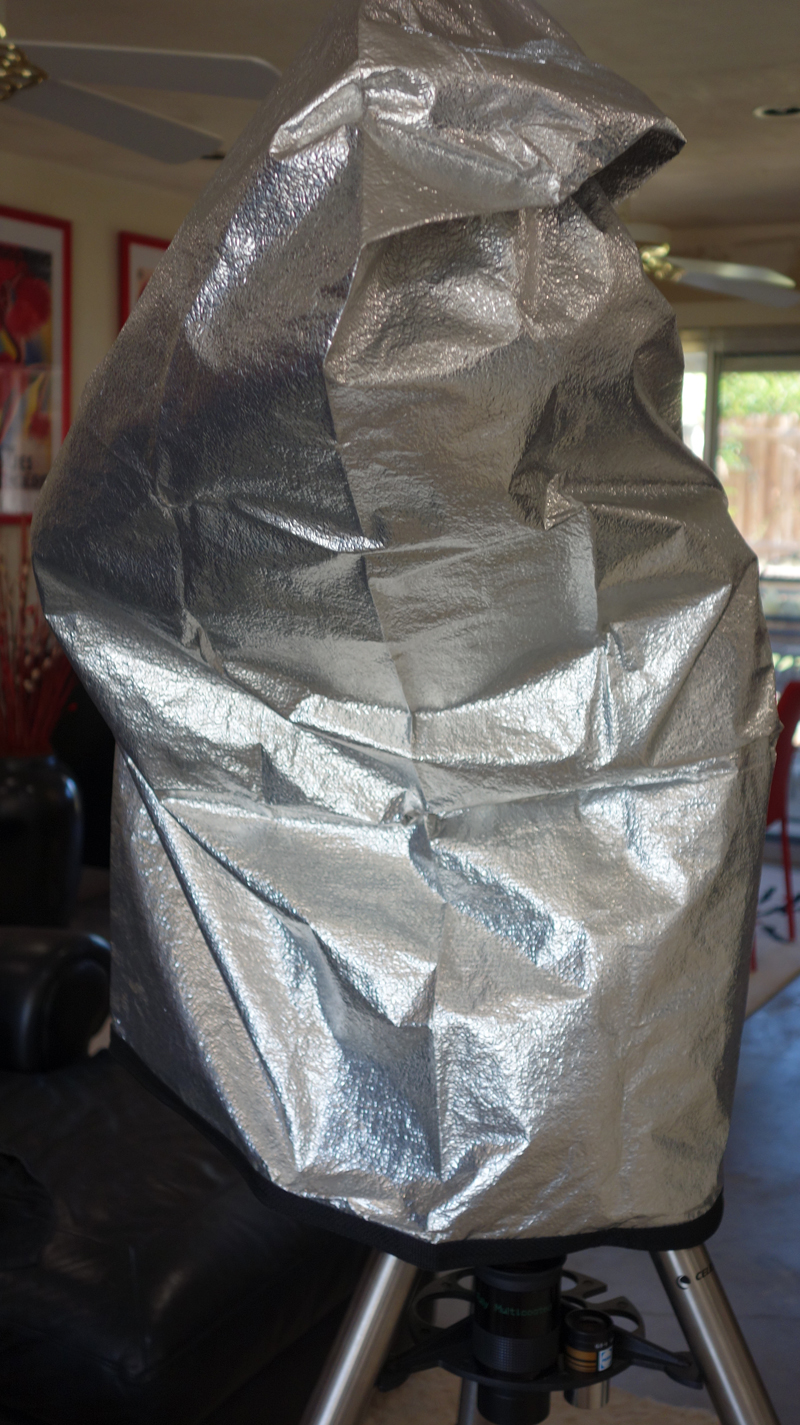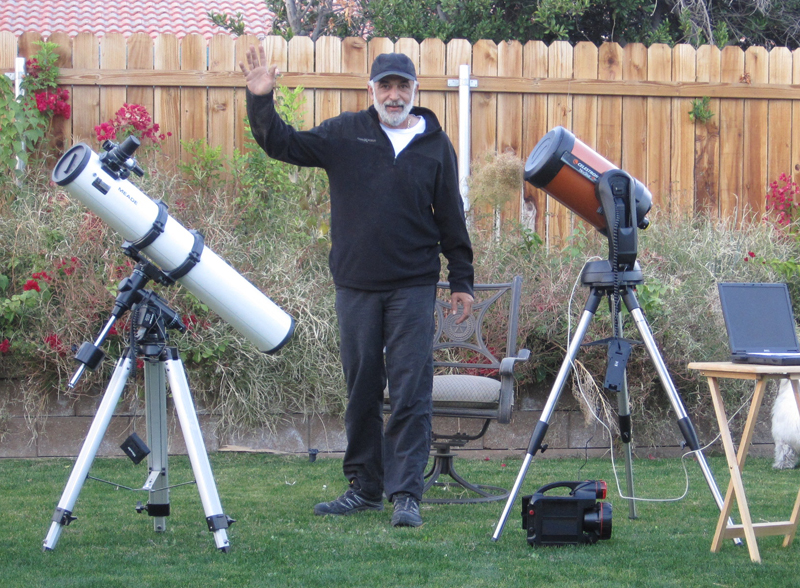
Getting ready for the Sierra camping season and I have completed upgrading my Celestron C8se telescope.
This is the third telescope I have owned. The first was a 3” diameter Tasco refractor that I used for decades. In 2002 I replaced it with a 5” diameter reflector (Meade 127NT/500) and in 2006 I purchased an 8” diameter Celestron NexStar 8SE computerized Schmidt-Cassegrain. Actually the Orleans Hotel in Las Vegas bought it. I don’t care to gamble, but one night when we were visiting relatives, Joyce wanted to take her mother to the casino. While waiting around I dropped a few dollars in a slot machine and won $2,000. I later gave the Meade to my son, Joe.
It should be obvious that I won’t be taking the telescope on any backpacking trips, but it is an excellent way to spend the evenings when camping in our 2006 Niagara Folding Tent Trailer.
Without getting too technical, the Schmidt-Cassegrain is a short telescope utilizing two mirrors that effectively give the telescope a focal length similar to a longer tube, such as a refractor or reflector. Looking at the picture at the top of the page, the long white telescope on the left is a 5” diameter reflector telescope with a focal length of 1020mm. The much shorter NexStar 8SE on the right has a focal length of 2032mm, because of its special construction.
FOCAL LENGTH
A telescope’s focal length is the distance from the primary lens or mirror and a point where the light rays converge in focus. Focal length is main factor of the magnifying power of the telescope. With a low magnification the image is small, but sharp. If the magnification is too large, the image becomes blurry. The method used to determine the useful magnification is to multiply the primary mirror or lens diameter (in inches) by 60. So a telescope with an 8” diameter primary would have a maximum magnification of 480X. This is the specification of my NexStar 8. The maximum magnification of the 5” Meade reflector is 300X.
To view an object in the sky, one need’s to insert an eyepiece into the telescope. The focal length of the eyepiece will determine the magnification based on the focal length of the telescope.
The focal length of my NexStar is 2032 millimeters. Eyepieces also have a focal length specification in millimeters. If we divide the focal length of the telescope by the eyepiece focal length, we get the magnification. If I use a 40mm eyepiece with my NexStar, the magnification is approximately 50X (2032mm divided by 40mm). With a 10mm eyepiece, the magnification is 203X (2032mm divided by 10mm). Of course one needs optimum viewing conditions as we approach the maximum magnification.
So let’s compare the magnification of the two telescopes above using a 25mm eyepiece. The 5” Meade is 40X and the 8” NexStar is 81X.
So where are we going with this?
One of the upgrades I did to my telescope is to purchase a diagonal that accepts both 1.25” and 2” diameter eyepieces, instead of the standard 1.25” diagonal. Basically, a 2” eyepiece gives you a wide angle view of the sky. Also it is easier to look into the eyepiece because it has a much wider diameter.
A diagonal uses a mirror set at a 45 degree angle to turn the telescope’s image at a 90 degree angle. The diagonal allows for an easy viewing position by the observer. The diagonal correctly orients the vertical image, but the horizontal view is reversed (left to right).
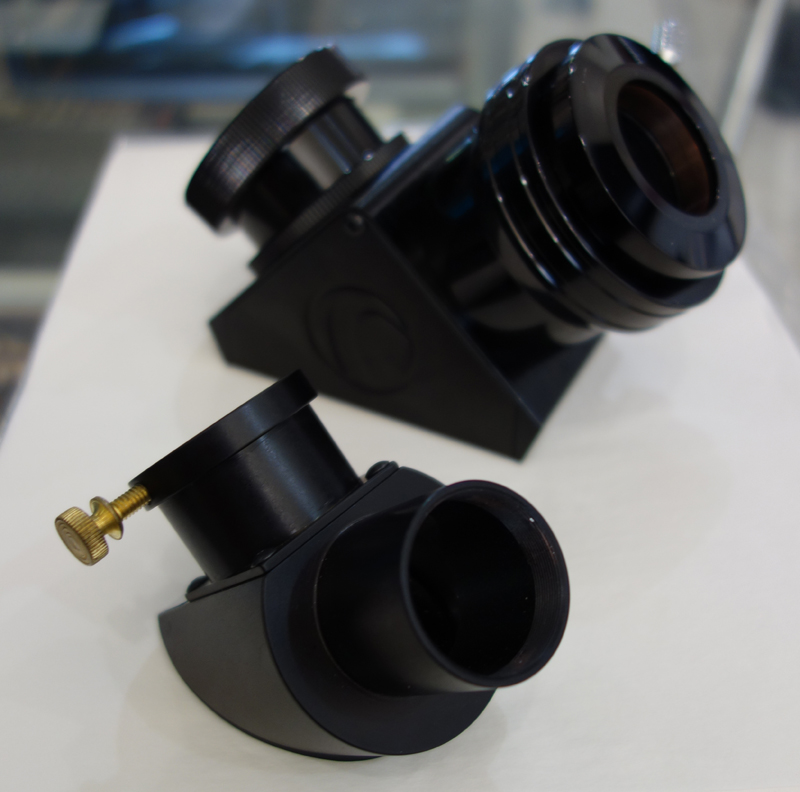
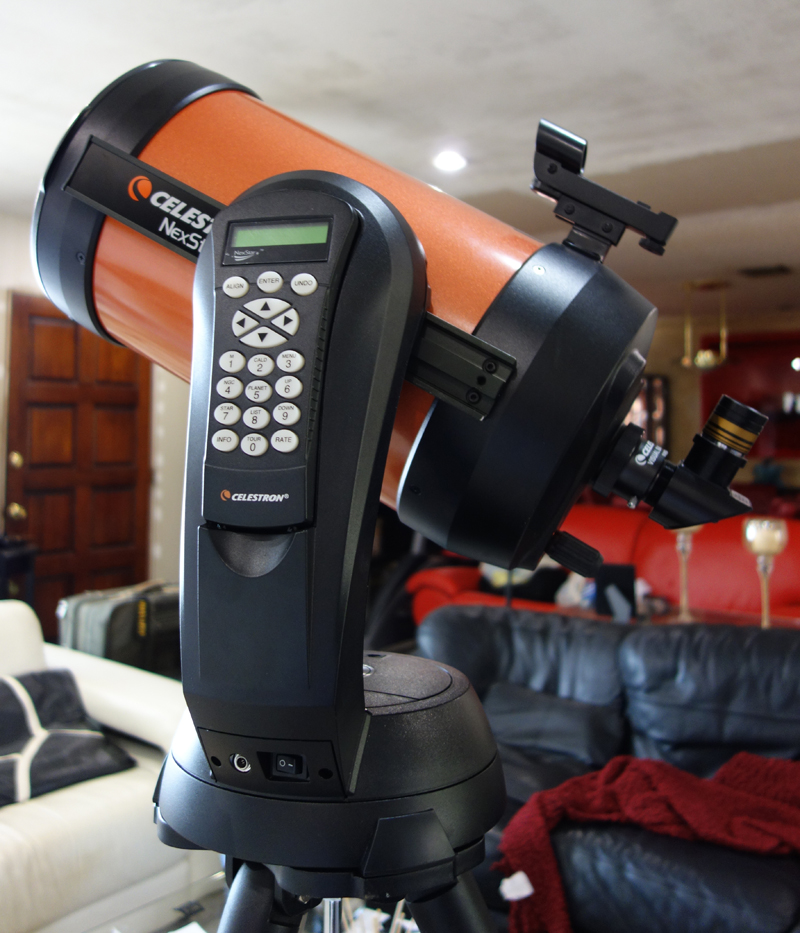
COMPUTERIZED TELESCOPE MOUNT
The NexStar is attached to a computer controlled mount. This keypad allows the user to operate the telescope. The computerized mount features (from the Celstron website) are described below. The bottom line for most people is that once the telescope is set-up and an object is located, the telescope moves to keep the object in view while the earth turns.
- 40,000 object database with 200 user-definable objects and expanded information on over 200 objects
- Celestron’s SkyAlign feature allows the observer to align on any three bright celestial objects, making for a fast and easy alignment process
- Flash upgradeable hand control software and motor control units for downloading product updates over the Internet
- Custom database lists of all the most famous deep-sky objects by name and catalog number; the most beautiful double, triple and quadruple stars; variable stars; solar system objects and asterisms
- DC Servo motors with encoders on both axes
- Autoguider port for long exposure astrophotography
- Double line, 16-character Liquid Crystal Display Hand Control with backlit LED buttons for easy operation of goto features
- NexRemote telescope control software and RS-232 cable included for advanced control of your telescope via computer
- GPS-compatible with optional SkySync GPS Accessory
UPGRADES
Bob’s Knobs
One of the first modifications I did was to install a set of “Bob’s Knobs” to replace the screws that are used to align the optics of the telescope. This is referred to as collimation.
The knobs make it a simple procedure to adjust the optics, which is really just adjusting the tilt of the secondary mirror at the front of the telescope.
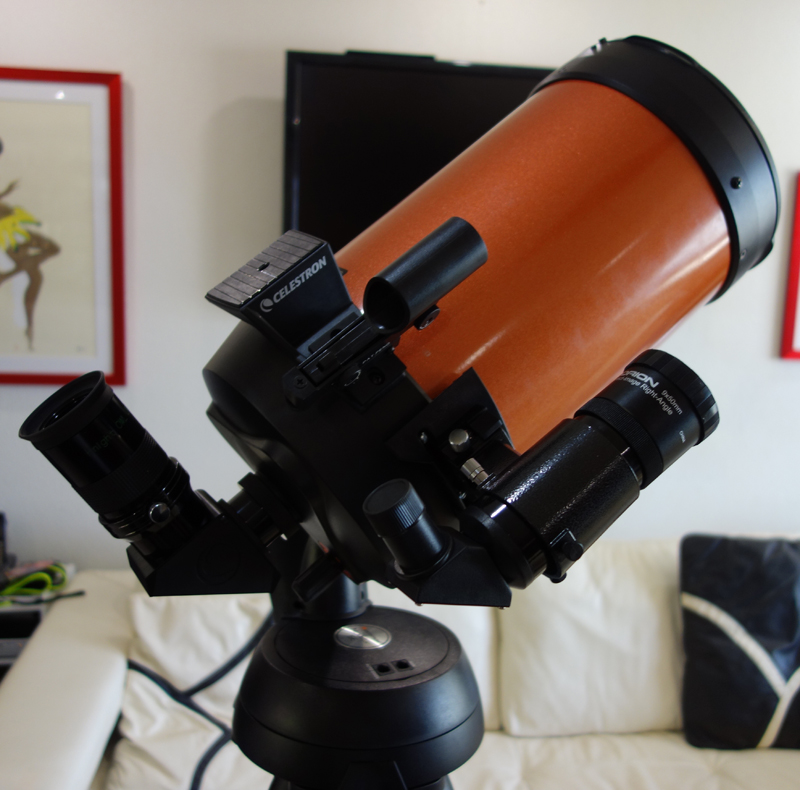
BAADER SKY SURFER III RED-DOT-FINDER SCOPE
Allows a wide field view of the sky and locates objects with a red laser beam. This is the first step in locating an object. Also handy for pointing out the object you are viewing with the telescope to a guest.
ORION 9X50MM CORRECT ANGLE SPOTTING SCOPE
The Orion Finder Scope makes it easy to center objects once they have been located with the red-dot-finder. Special prisms correctly orient the sky in the viewer.
CAMERA MOUNT
There are many ways to mount a camera to a telescope, to include replacing the diagonal and eyepiece with a special mount and attaching a camera mount. There are also specialized astrophotography cameras and software for the serious astronomer.
My interest in astrophotography is casual, and I expect to get some nice pictures using the Sony RX100 camera Joyce bought me last Christmas. Here is a review of the Sony RX100 at Digital Photography Review.
2” DIAGONAL & EYEPIECES
I already discussed this in detail. Along with the diagonal I purchased two eyepieces (20mm and 30mm) along with a 2” Barlow lens adapter. A Barlow doubles the magnification of any eyepiece it is attached to.
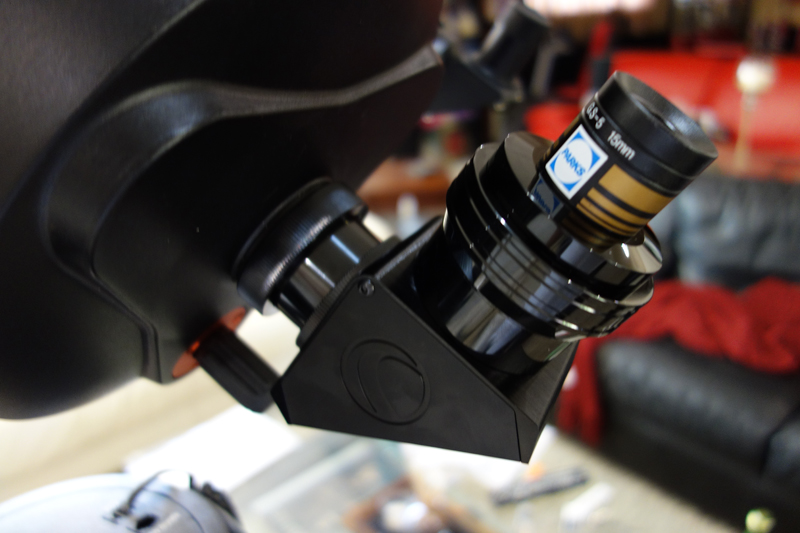
The lens storage bracket on my tripod was already drilled to accept up to two 2” eyepieces and five 1.25” eyepieces. Someone was thinking.
JMI HAND CONTROL MOUNTING BRACKET
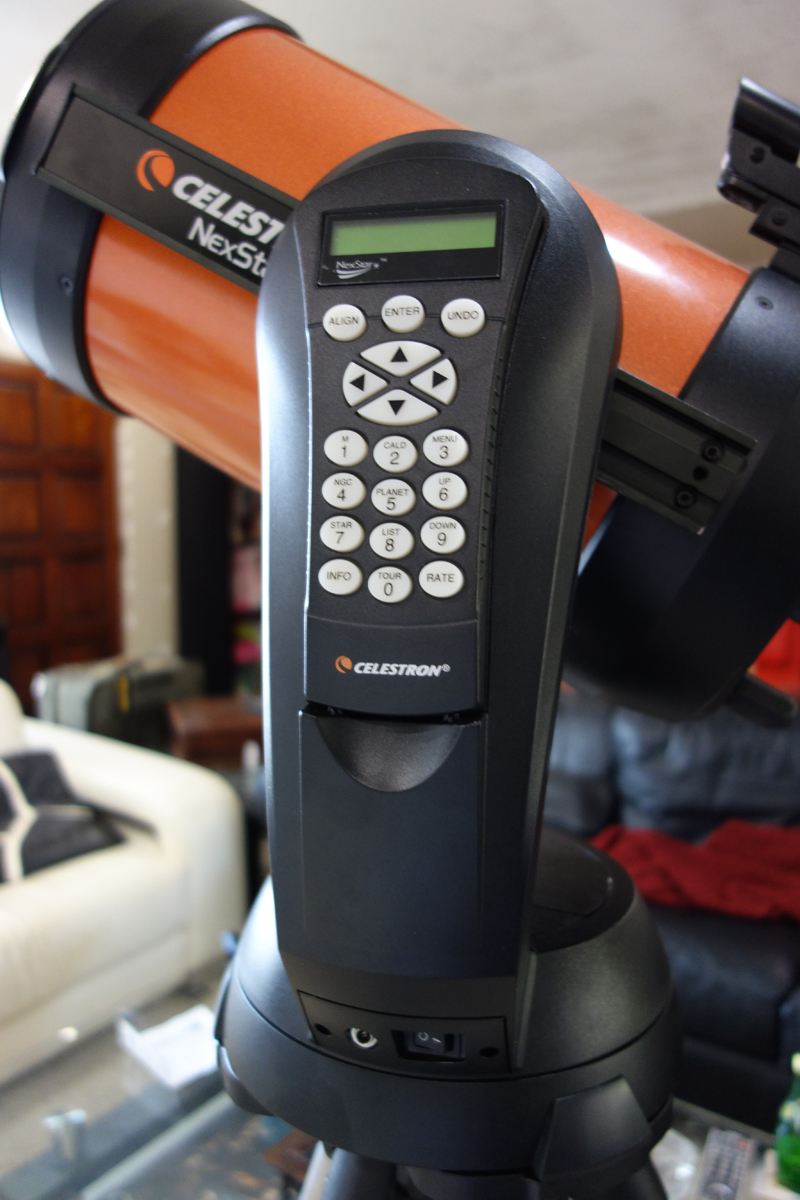 One thing I hated about using the computer hand controller was its inconvenient location, or trying to hold it in one hand while dealing with the coiled connecting cable. I found this nifty mounting bracket.
One thing I hated about using the computer hand controller was its inconvenient location, or trying to hold it in one hand while dealing with the coiled connecting cable. I found this nifty mounting bracket.
CELESTRON SKYSYNC GPS ACCESSORY
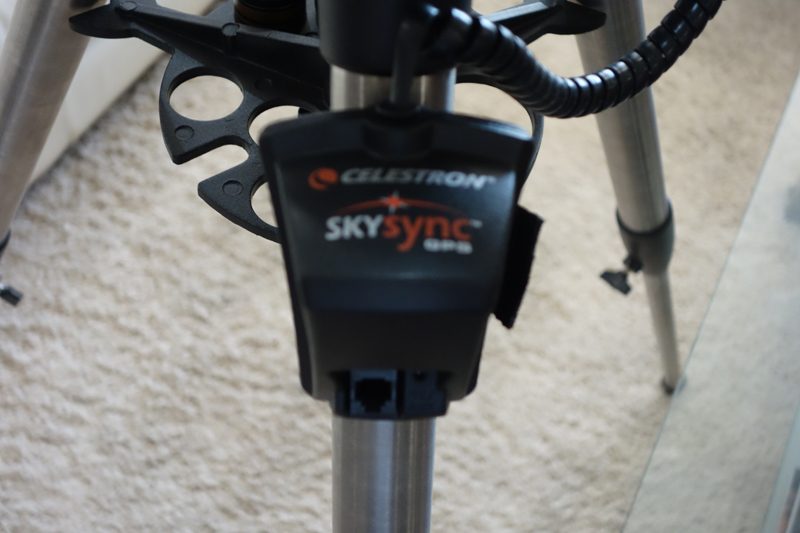
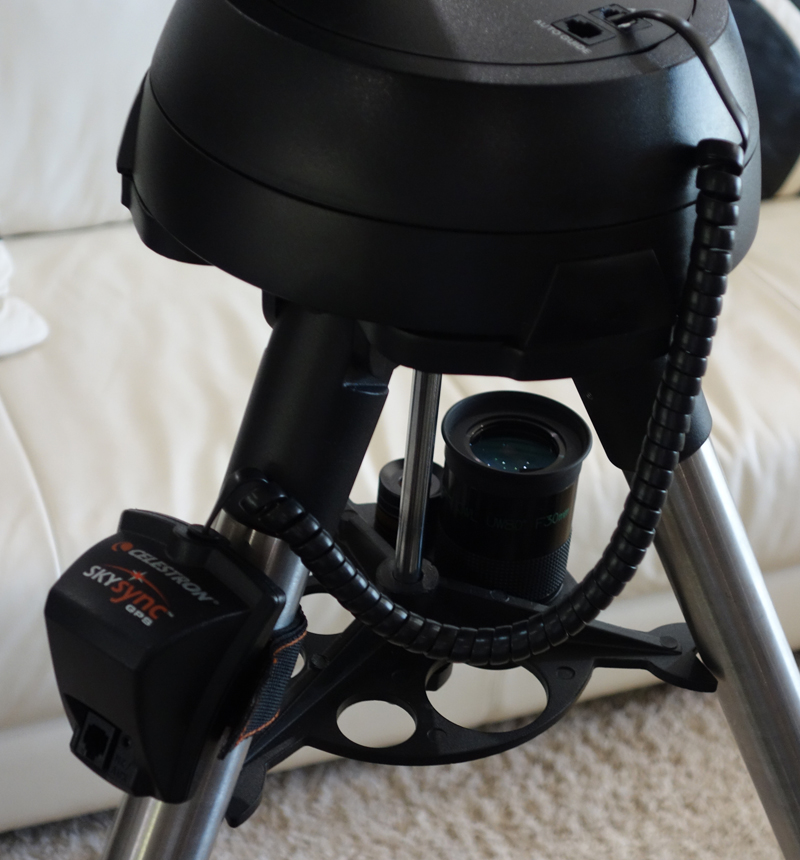 Each time I would set up the telescope’s computer system I would have to enter the latitude, longitude, and time. This meant I need to bring some sort of a GPS device with me. This nifty item plugs into the telescope mount and automatically enters the needed data.
Each time I would set up the telescope’s computer system I would have to enter the latitude, longitude, and time. This meant I need to bring some sort of a GPS device with me. This nifty item plugs into the telescope mount and automatically enters the needed data.
TRIPOD SAND AND VIBRATION PADS
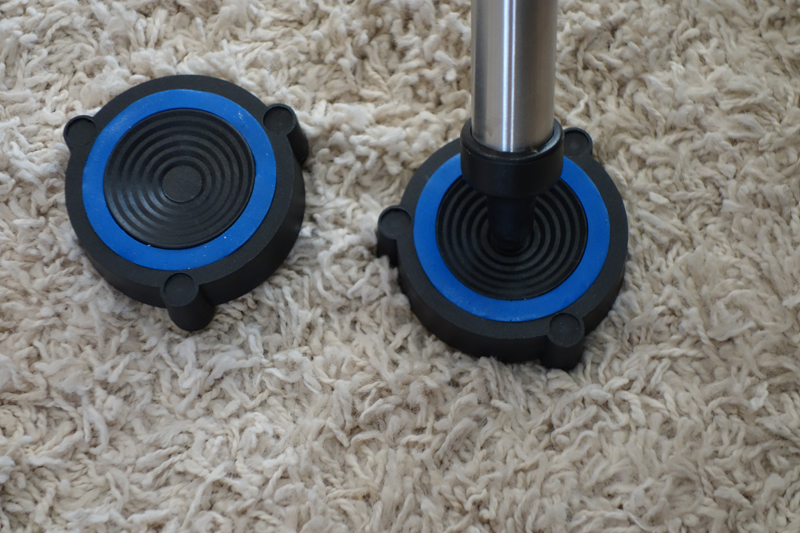 Nice accessory to keep the tripod level and vibration free.
Nice accessory to keep the tripod level and vibration free.
STORAGE SOLUTIONS
I bought a special foam padded case for the telescope and a generic case for all the accessories.
POWER TANK
The telescope mount requires 8 AA batteries and they don’t last long because they have to drive the motor in the mount. A few Christmases ago Joyce bought this nifty power pack for me. It has a built-in flashlight with a red cap (to save my night vision), an energy efficient LED spotlight, cigarette lighter adapter, 110 volt charging adapter, two 12 volt power points, and a special cable to connect to the NexStar telescope.
TELEGIZMOS SOLAR SCOPE COVER
Made by the same company that made the PUGizmos for our camper. Sometimes it is best to leave your telescope outside and observe each night on extended camping trips. The TeleGizmo protects it from the elements.
Okay, we’re ready to go camping and stargazing 🙂
